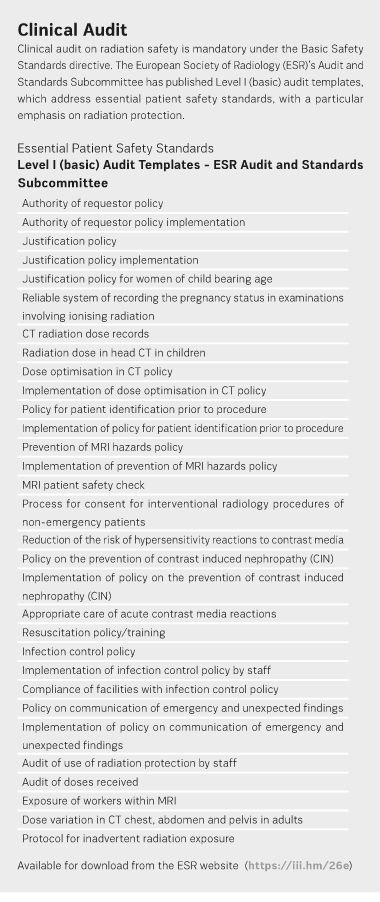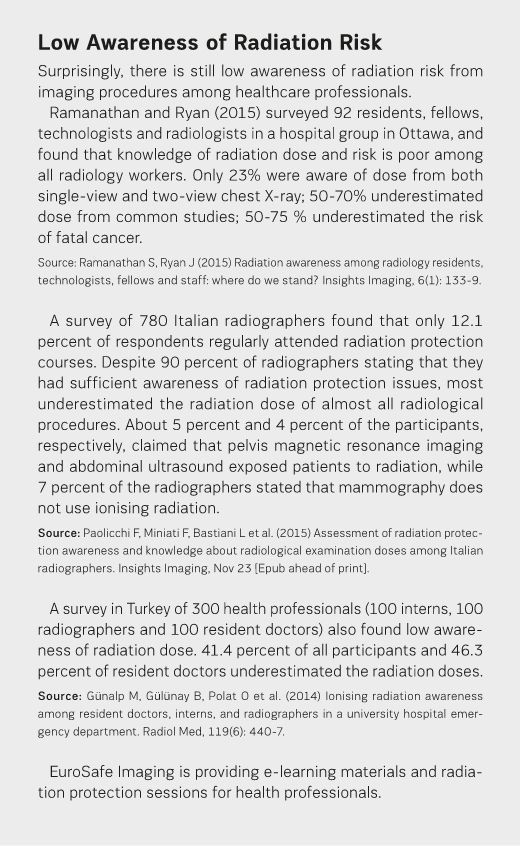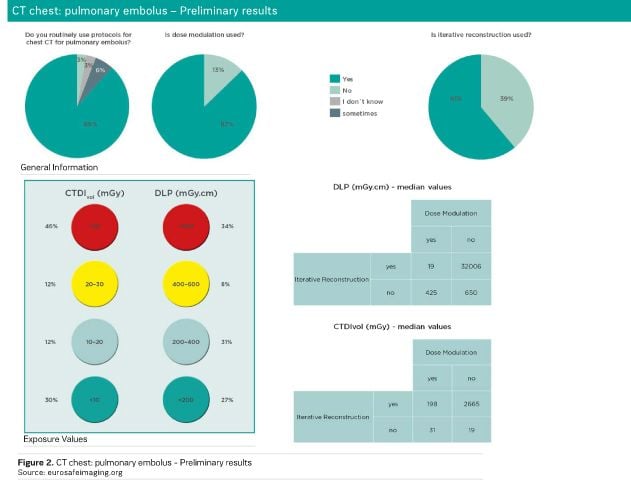HealthManagement, Volume 16 - Issue 1, 2016
A SYMBIOTIC RELATIONSHIP
Quality of Healthcare
Quality healthcare by definition means safe healthcare, and safety should be managed as an integral part of quality assurance. Safety, as defined by the National Patient Safety Foundation, is “the degree to which health care processes avoid, prevent, and ameliorate adverse outcomes or injuries that stem from the processes of health care itself” (National Patient Safety Foundation 2000). The Institute of Medicine defines it as freedom from accidental injury due to medical care, or medical errors (Institute of Medicine 1999).
Safety and quality have been highlighted by the European Commission’s Directorate-General on Health that was tasked with considering the core dimensions of quality of healthcare, including patient safety (European Commission Expert Panel on Effective Ways of Investing in Health 2014). The Expert Panel listed the dimensions of safety and related goals:
• Development of safety systems (including authorities, bodies, culture of patient safety, standards/guidelines) and strategies (policies, programmes);
• Development of patient safety information and learning systems;
• Education and training of healthcare workers, management and administrative staff;
• Encouragement of multidisciplinary patient safety on-the-job education and training;
• Empowering and informing citizens and patients, including patient involvement in safety policies.
The Panel noted that the most frequently used dimensions of quality of care include safety. However, these dimensions are not mutually exclusive and cannot be considered comprehensive.
The European Society of Radiology’s Call for an Action Plan for Medical Imaging to Improve Quality of Care and Patient Safety was launched in November 2014, and aims to target policy-makers to strengthen efforts of harmonisation in regard to quality and safety, education and training, as well as research and technology, in order to significantly improve European healthcare systems, and ensure better quality and safety for European patients (ESR 2014).
To progress harmonisation of safety in imaging across Europe, the ESR calls on the EU institutions to:
• Support the establishment of European quality and safety indicators for imaging;
• Support an audit of imaging equipment, doses, image quality and procedures of the medical imaging chain in Europe and to develop plans to modernise equipment;
• Support efforts to improve communication with patients;
• Improve inter-institutional cooperation for more coherent action in the area of health;
• Support the EuroSafe Imaging campaign (eurosafeimaging.org) to raise awareness of the importance of radiation protection.
The International Atomic Energy Authority (IAEA) also issued a draft safety guide Radiation Protection Safety in Medical Uses of Ionising Radiation in November 2014 (IAEA 2014).

Patient Safety
The American College of Radiology and the Radiological Society of North America (RSNA)’s public information website radiologyinfo.org includes a section on patient safety, with information on radiology benefits and risks, radiation dose in x-ray and CT exams, and a printable medical imaging record card that patients can use to record their medical imaging history. In addition, the ACR has published a Position Statement On Quality Control and Improvement, Safety, Infection Control, and Patient Education (American College of Radiology 1998).
UCSF’s radiology department is an example of a well-developed radiation safety programme that includes an experienced faculty member who devotes much of their time to patient safety (radiology.ucsf.edu/patient-care/patientsafety). The department’s website includes guidelines for use of CT and MRI during pregnancy and lactation, as well as MRI and contrast guidelines. They list ten ways to ensure imaging safety:
1. Choosing the most appropriate imaging study
2. Tailored techniques
3. Careful quality control
4. Latest CT technology
5. Special attention for paediatric patients
6. New low–dose CT protocols
7. Shielding
8. Beam collimation policy
9. Appropriate training
10. Radiation oversight committee
To promote patient understanding of radiation risk, health professionals involved need to establish confidence with the patient, emphasise that potential risks are an estimation and not actual, use the concept of benefit instead of risk and explain the quality of the practice and the equipment.
EuroSafe Imaging with the ESR Patient Advisory Group for Medical Imaging have published patient information on radiation risks on its website (eurosafeimaging/information-for-patients).

Radiology Errors and Prevention
Errors do happen in the radiology department, with failure to correctly identify patients leading to recognised wrong events, with potential for treating the wrong patient, doing the wrong procedure on the wrong side or the wrong site. The main errors are:
• Wrong examination
• Wrong patient
• Wrong side
• Wrong site
• Wrong CA (contrast agent)
• MR safety
• Wrong protocol
• Pregnancy (technician/radiologist not aware that patient is pregnant)
Such errors are caused by incorrect order or requisition entry, failure to confirm patient identity, failure to follow site and procedure verification or procedure qualification processes.
Brook et al. (2010) found that poor communication, whether it w as verbal communication or IT -related, caused m any errors. Others have highlighted communication as the root of errors, for example: “Poor communication is at the heart of many medical errors” (Woolf et al. 2004).
“Communication failures that contribute to discontinuity of care stem from a variety of causes, ranging from a lack of interpersonal communication skills to barriers in the work environment to suboptimal use of computer networking tools” (Scott 2007).

Such errors can be prevented with clear procedures on MRI safety, identifying pregnancy and contrast agent procedures for iodinated agents and gadolinium chelates. The ESR’s Clinical Audit Templates include a template for implementation of a policy for patient identification prior to procedure.
Safety Reporting
Radiology departments should establish an events registry. One model is the the U.S. Agency for Healthcare Research and Quality-developed Patient Safety Indicators (PSIs) (n.d.) to provide information on potential in-hospital complications and adverse events following surgeries, procedures, and childbirth or the Australian initiative the Radiology Events Register (Mandel 2015).
Variation
It is well-known that radiation dose given during an exam differs between technicians, radiologists, within departments and across countries (Figure 1). The study by Ip et al. (2015) found wide variations in use across the United States and identified potential targets for future imaging quality improvement initiatives, including head CT and lumbar spine MR imaging. “Is my CT justified?” The onus is on the referring physician, in consultation with the radiologist, to prove it.

Is Your Imaging EuroSafe?
Action 8 of EuroSafe Imaging is to develop a data collection project “Is your imaging EuroSafe?” and an educational project on guidelines “Are you imaging appropriately?”
The aim is to build a European repository based on dose exposures for specific clinical indications that can be used for self-benchmarking, for establishing diagnostic reference levels (DRLs) and to provide insights into the influence of the age of the equipment on dose exposure. Data will be collected for adult patients on standard practice and scanner specifications.
Surveys are ongoing on the following procedures:
• CT head: acute stroke
• CT chest: pulmonary embolus (Figure 2)
• CT head: acute head trauma
• CT chest: rule out pulmonary metastases of extrathoracic cancer
• CT chest: HR CT for diffuse parenchymal disease
• CT abdomen: liver metastases
• CT abdomen: urinary calculus
• CT abdomen: appendicitis
• CT Colonography
• Cardiac CT: calcium coronary scoring

Conclusion
Safe use of imaging should remain the main goal. However, quality
of practice, organisation and management are absolutely essential for ensuring
patient safety, which also implies a need for access to adequate IT tools.
Benchmarking, clinical audit and patient information are also essential in this
context and should be developed. Involvement of all stakeholders is crucial.
References:
Agency for Healthcare Research and Quality (n.d.) Patient safety indicators overview. [Accessed: 13 July 2015] Available from qualityindicators.ahrq.gov/modules/psi_overview.aspx
American College of Radiology (1998, rev. 2008) ACR position statement on quality control and improvement, safety, infection control, and patient education. [Accessed: 13 July 2015] Available from acr.org/~/media/ACR/Documents/PGTS/PositionStatement.pdf
Brook OR, O’Connell AM, Thornton E et al. (2010) Quality
initiatives: anatomy and pathophysiology of errors occurring in clinical
radiology practice.Radiographics, 30(5):1401-10.
Council Directive (EC)
2013/59/EURATOM of 5 December 2013 laying down basic safety standards for
protection against the dangers arising from exposure to ionising radiation, and
repealing Directives 89/618/Euratom, 90/641/Euratom. [Accessed: 13 July 2015]
Available from eur-lex.europa.eu/legal-content/EN/ALL/?uri=CELEX:32013L0059
European Commission Directorate General for Energy (2014) Medical Radiation Exposure of the European Population, Part 1 & Part 2. Radiation protection 180. [Accessed: 13 July 2015] Available from ec.europa.eu/energy/sites/ener/files/documents/RP180.pdf
European Commission Expert Panel on Effective Ways of Investing in Health (2014) Preliminary report on future EU Agenda on quality of health care with a special emphasis on patient safety. 10 July. [Accessed: 3 April 2015] Available from ec.europa.eu/health/expert_panel/opinions/docs/005_safety_quality_of_care_en.pdf
European Society of Radiology (2014) Call for a European action plan for medical imaging to improve quality of care and patient safety. [Accessed: 13 July 2015] Available from myesr.org/html/img/pool/ESR_2014_Call-for-Action-web.pdf
Institute of Medicine (1999) To err is human: building a safer health system.[Accessed: 3 April 2015] Available from iom.nationalacademies.org/~/media/Files/Report%20Files/1999/To-Err-is-Human/To%20Err%20is%20Human%201999%20%20report%20brief.pdf
International Atomic Energy Agency (2014) Radiation protection and safety in medical uses of ionising radiation. Draft safety guide DS 399. [Accessed: 13 July 2015] Available from www-ns.iaea.org/downloads/standards/drafts/ds399.pdf; explanatory notes at www-ns.iaea.org/downloads/standards/note-verbales/ds399-nv-english.pdf
Ip IK, Raja AS, Seltzer SE et al. (2015) Public data to target variation in providers’ use of CT and MR imaging among Medicare beneficiaries. Radiology, 275(3): 718-24
.
Mandel C, Grimm J, Schultz T (2015) The Radiology Events Register (RAER): The role and value of incident reporting in radiology incident reporting.HealthManagement.org The Journal, 15(1): 109,112-4. Available from healthmanagement.org/c/healthmanagement/issuearticle/the-radiology-events-register-raer
National Patient Safety Foundation (2000) Agenda for research and development in patient safety. [Accessed: 31 March 2015] Available from c.ymcdn.com/sites/www.npsf.org/resource/collection/4b2e552f-48fa-4dcf-8bd8-574ee15efd99/Agenda_for_RD_in_Patient_Safety.pdf
Scott A (2007) Improving communication for better patient care. Radiol Technol,78(3): 205-18.
Woolf SH , Kuzel AJ , Dovey SM et al. (2004) A string of mistakes: the importance of cascade analysis in describing, counting, and preventing medical errors. Ann Fam Med, 2(4): 317–26.






